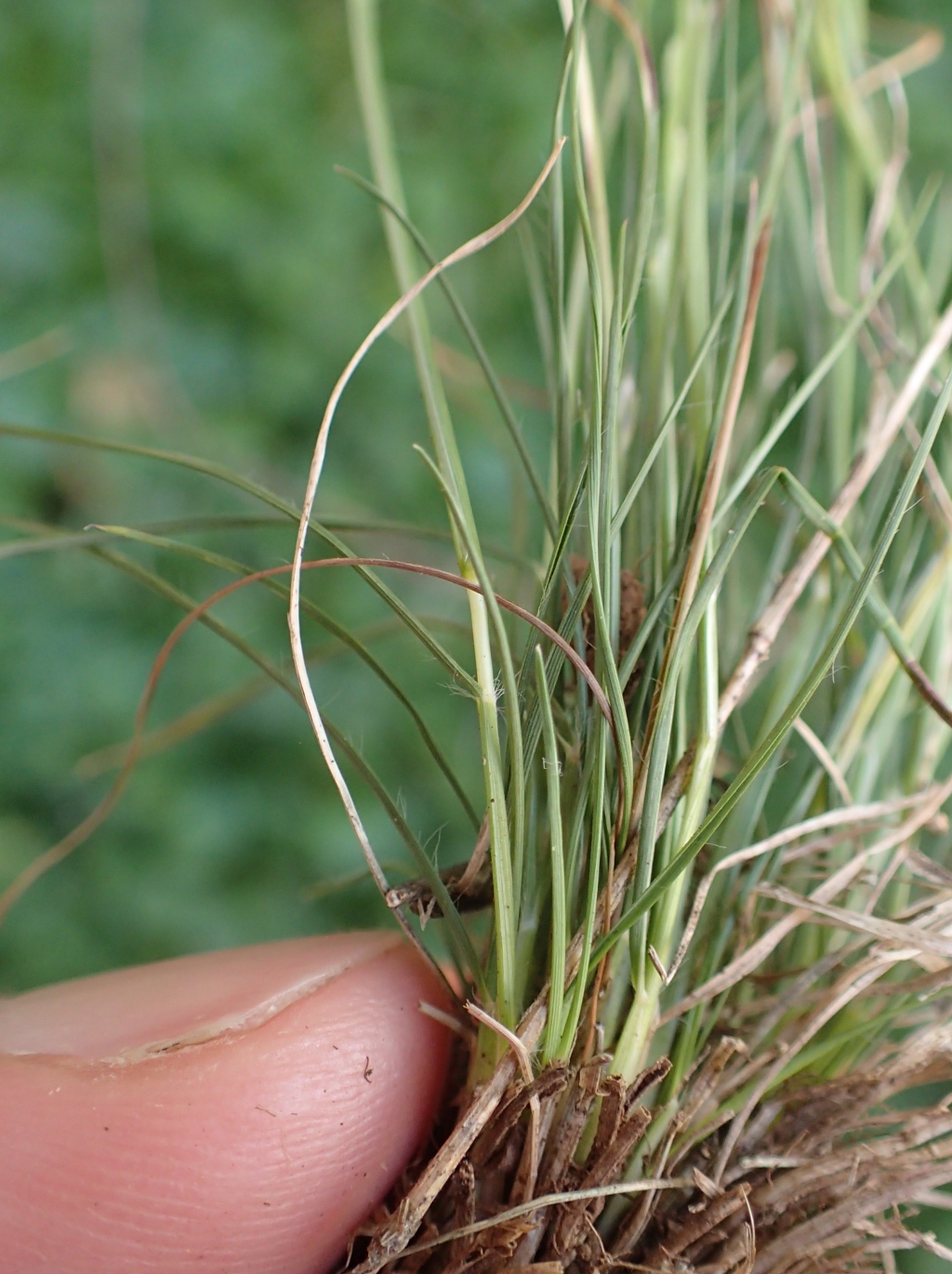Tripogonella loliiformis
(F.Muell.) P.M.Peterson & Romasch. Rye Beetle-grassA small, tufted annual or perennial to 35 cm (but often less than 15 cm high). Leaves sprinkled with fine hairs, or rarely, glabrous; sheath pale; blade closely folded to inrolled, to 5 cm long and 1.5 mm wide when flattened out; ligule ciliate at apex, c. 0.5 mm long. Inflorescence a very slender spike. Spikelets 6–14-flowered, 3–12 mm long, shallowly recessed, remaining erect, the lower ones often rather distant, the upper often overlapping, mostly purplish; glumes obtuse, the lower 1.5–2.2 mm, the upper 2.5–3.5 mm long; lemma ovate, 2–2.5 mm long (excluding awn), obtuse, notched at apex with the midvein exserted as an awn arising from the base of the notch and exceeding lemma by up to 1.5 mm, callus with a dense tuft of silky hairs c. 1 mm long. Flowers most of year, mainly Oct.–Mar.
VVP, VRiv, MSB, MuF, OtP, Gold, CVU, GGr, NIS, EGU, HSF. All mainland states. An uncommon grass of scattered occurrence through drier areas of the state (e.g. Mt Arapiles, basalt plains just west of Melbourne, Strathbogie Ranges, Killawarra Forest near Wangaratta, Beechworth, Suggan Buggan). Usually occurring on shallow soils overlying rock.
One of few 'resurrection plants' native to Victoria. The dry, apparently lifeless foliage has the capacity to rehydrate and become green following substantial rains.
Walsh, N.G. (1994). Poaceae. In: Walsh, N.G.; Entwisle, T.J., Flora of Victoria Vol. 2, Ferns and Allied Plants, Conifers and Monocotyledons, pp. 356–627. Inkata Press, Melbourne.
 Spinning
Spinning

